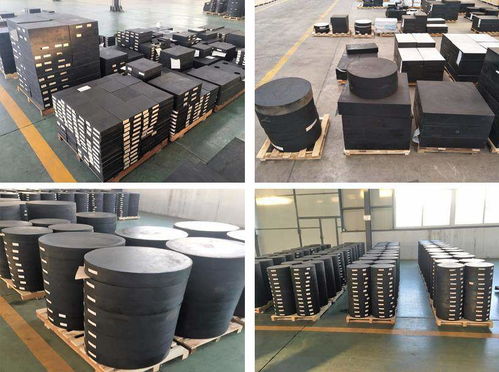Home < News < Global Standards for Elastomeric Bridge Bearings: Technical Comparison of ASTM, EN, and GB
Elastomeric bridge bearings are crucial components transferring loads while accommodating movements in bridge structures. This technical analysis compares American (ASTM/AASHTO), European (EN), and Chinese (GB/JT) standards, addressing critical differences in design methodology, material specifications, and testing protocols. Targeting engineers and infrastructure specialists, this comparison integrates essential long-tail keywords like "ASTM vs EN bridge bearing standards" and "GB rubber bearing specifications for seismic design."
US Standards (AASHTO/ASTM) employ Load and Resistance Factor Design principles, specifying maximum compressive stress of 1,000 psi (6.9 MPa) under static loads and shear deformation limits ≤50% of elastomer thickness. European Standards (EN 1337-3) prioritize durability and environmental resilience, requiring fatigue resistance validation through 10 million load cycles and operational temperature range of -40°C to +50°C. Chinese Standards (GB/T 20688.1, JT/T 4) blend international practices with localized adaptations, specifying compressive stress limits of 10-12 MPa but lacking comprehensive requirements for low-temperature performance or fatigue validation.
US protocols (ASTM D4014) mandate nitrile or natural rubber with tensile strength ≥17 MPa and reinforcement steel with minimum yield strength of 230 MPa. EU requirements (EN 1337-3) specify chloroprene or EPDM rubber with ozone resistance testing and mandatory UV/chemical exposure tests. Chinese standards (JT/T 4) permit natural or chloroprene rubber with tensile strength ≥15 MPa but lack standardized ozone resistance testing. Testing comparisons reveal significant differences: EU requires mandatory 10-million-cycle fatigue testing, US offers optional fatigue validation, while China has no specific fatigue requirements. Aging resistance tests vary from 70h at 100°C (US) to 168h at 100°C (EU) and 96h at 100°C (China).
Technical analysis identifies substantial gaps in Chinese standards regarding low-temperature performance (-25°C limit vs EU's -40°C) and dynamic loading validation. EU standards demonstrate superiority in environmental durability testing, while US specifications provide more detailed seismic design provisions. For global implementation, high-traffic bridges should adopt EN compliance for fatigue-critical structures, cost-sensitive projects may utilize GB standards for moderate-span bridges, and seismic zones should implement AASHTO provisions. Chinese manufacturers require enhanced material testing, particularly ozone resistance, to meet international requirements.

This comparison establishes a clear technical hierarchy where EU standards excel in durability validation, US specifications lead in load-specific design, and Chinese standards offer practical but less comprehensive solutions. Bridging these gaps requires adopting hybrid methodologies: incorporating EN-style fatigue testing into GB standards, integrating seismic design principles from AASHTO, and enhancing material specifications to address global environmental challenges. These improvements will ensure safer, more durable bridges while meeting region-specific infrastructure needs.